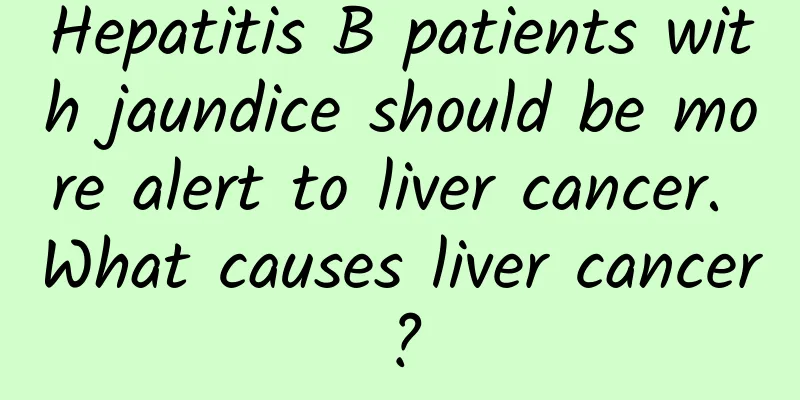What causes neonatal jaundice?

|
Neonatal jaundice is mostly caused by the immature liver's inability to process bilirubin, and may also be related to maternal and fetal blood type incompatibility, infection, genetic diseases, etc. Jaundice is divided into physiological and pathological types, and needs to be treated individually according to the cause, such as close observation, phototherapy, exchange transfusion therapy, etc. 1 Physiological reasons The most common cause of neonatal jaundice is physiological jaundice. This condition often occurs 2-3 days after birth, when the neonatal liver enzyme system is not yet mature and cannot quickly metabolize bilirubin in the body. Because the life span of newborn red blood cells is short and the fragmentation rate is high, the indirect bilirubin accumulation causes the skin and sclera to turn yellow. Normally, physiological jaundice will disappear on its own within 7-14 days after birth. No special treatment is required for full-term infants, and records and observations are sufficient. However, if it is a premature baby, it may last longer and needs to be closely monitored. 2 Pathological causes Pathological jaundice usually requires more attention and may be related to the following aspects: Incompatibility of blood types between mother and baby: ABO blood type or Rh factor incompatibility can cause neonatal hemolysis, and a large amount of bilirubin is released after the red blood cells are destroyed. Infection: Intrauterine infection or neonatal infection such as neonatal sepsis may cause liver damage and affect bilirubin metabolism. Genetic diseases: such as glucose-6-phosphate dehydrogenase G6PD deficiency, hypothyroidism, etc., may affect bilirubin metabolism. The above situations may cause a rapid increase in bilirubin in the blood. In this case, you need to seek medical attention as soon as possible to avoid complications such as bilirubin encephalopathy and kernicterus. 3 Treatment measures Treatment should be individualized based on the cause and severity of jaundice: Physiological jaundice: No special treatment is required. Feeding on demand and increasing the frequency of bowel movements will help excrete bilirubin. Phototherapy: It breaks down bilirubin through blue light irradiation. It is suitable for cases with high bilirubin levels but have not yet reached the standard for blood transfusion. Exchange transfusion: For severe jaundice caused by blood incompatibility or hemolysis, exchange transfusion is needed to lower bilirubin levels, usually in the neonatal intensive care unit. 4 Things to note in life Start breastfeeding as early as possible and develop the habit of feeding on demand. Breastfed newborns can be fed multiple times to promote meconium excretion. Regular jaundice monitoring is also key, especially for premature infants and other high-risk groups. If jaundice persists for too long or significantly worsens, do not ignore it. Seemingly simple problems may hide complex causes. Neonatal jaundice can be a normal phenomenon or a sign of disease. Parents should pay more attention to observation and seek medical treatment in time to identify the specific cause and take effective treatment. At the same time, try to ensure that the newborn starts breastfeeding as early as possible and is fed properly. |
<<: What is the cause of high jaundice in newborns?
>>: How to treat hand, foot and mouth disease in children?
Recommend
What vaccines are there for pneumonia in children?
There are currently 7-valent pneumococcal vaccine...
Symptoms of jaundice in children
As we all know, many newborns will have jaundice ...
How to use medicine for children's cough? What are the symptoms of children's cough?
There are many reasons why children cough, and th...
Can hand, foot and mouth disease turn into pneumonia?
Hand, foot and mouth disease generally does not t...
Is it easy to cure diarrhea in children?
Children will often encounter symptoms of pediatr...
What to do with acute laryngitis in children
Acute laryngitis in children is usually caused by...
How to cure Kawasaki disease
Many friends often suffer from some diseases beca...
What causes jaundice in babies?
Infant jaundice is a yellowing of the skin and wh...
How to diagnose acute laryngitis in children
How to diagnose whether a child has acute laryngi...
Can Kawasaki disease in children be cured?
Can Kawasaki disease in children be cured? The an...
How to treat a two-month-old baby with a cold, cough and phlegm? ...
The occurrence of colds and coughs can be serious...
How to treat constitutional jaundice
Generally speaking, constitutional jaundice is a ...
What are the symptoms of ADHD?
ADHD, also known as attention deficit hyperactivi...
Chinese medicine for treating pneumonia in children
There is a Chinese saying: "There are three ...
What causes hernia in children?
Pediatric hernia is a common pediatric surgical d...









